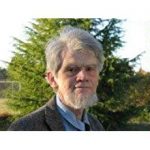 Osteoarthritis causes a tremendous amount of pain and disability. It is a disease that usually develops over a period of years, progressively getting worse, and currently affects over 237 million people, worldwide. As medical science has reduced mortality from infectious diseases, cancer, and metabolic diseases, people are living longer, and thanks to osteoarthritis, they are living longer with disability and suffering.
Osteoarthritis causes a tremendous amount of pain and disability. It is a disease that usually develops over a period of years, progressively getting worse, and currently affects over 237 million people, worldwide. As medical science has reduced mortality from infectious diseases, cancer, and metabolic diseases, people are living longer, and thanks to osteoarthritis, they are living longer with disability and suffering.
Although there is no cure for osteoarthritis at present, an arthritic knee joint, for example, can be replaced with a mechanical knee joint that eliminates the pain and restores the joint’s full range of motion. This is great, but requires major surgery, and some arthritic joints, such as finger joints, cannot be treated this way.
It would be great if there were a cure for osteoarthritis, as well as for many other diseases that are considered diseases of aging. The fact that osteoarthritis and other diseases of aging become progressively more of a problem as a person ages provides a clue as to what might be an underlying cause of the condition.
Some diseases, such as sickle cell anemia and beta thalassemia, are genetic diseases. A child inherits them from her parents. They are caused by a mutation in the child’s DNA. Progress is being made on genetic diseases such as these, using the CRISPR gene editing technology. Osteoarthritis and many other diseases are not inherited from parents: they are acquired during a person’s life. For these diseases, there is no defect in the person’s genome (the DNA), but these is a problem with their epigenome.
The epigenome is a collection of markers that sit on top of a cell’s DNA in strategic spots. They control the expression of the gene they are associated with. Such a marker can turn a gene on or turn it off, depending on whether it is present or absent. When genes are inappropriately turned on or off by an epigenomic switch, it can cause disease. Curing such diseases might be possible by reversing the switches that caused disease in the first place.
 Early Spanish explorers were bamboozled by natives in Florida who told of a fabled “Fountain of Youth.” The Spaniards never found it, and they continued to age along with everyone else. That Fountain of Youth turned out to be a mirage. However, we might be close to something like a fountain of youth right now, and if we are, it will be related to the epigenome.
Early Spanish explorers were bamboozled by natives in Florida who told of a fabled “Fountain of Youth.” The Spaniards never found it, and they continued to age along with everyone else. That Fountain of Youth turned out to be a mirage. However, we might be close to something like a fountain of youth right now, and if we are, it will be related to the epigenome.
The 2012 Nobel Prize in Physiology or Medicine was awarded to Sir John B. Gurdon and Shinya Yamanaka for work that demonstrated how to revert mature cells from aged animals and people to youthful stem cells. Stem cells are progenitor cells that can develop into all the different cell types in the body, such as muscle cells, brain cells, epithelial cells and so on. This was accomplished with the so-called Yamanaka factors (OCT4, SOX2, KLF4, and c-MYC). When these four factors were applied to aged cells, the cells lost all their characteristics and reverted to embryonic stem cells, which had the robustness of youth and the ability to differentiate into any kind of mature cell, even cells of a different type than the mature cell that the Yamanaka factors had been originally applied to.
People with osteoarthritis would very much like to experience a cure. However, they do not want to have to revert to human embryos to do it. This is where the current research comes in. In a paper that appeared in Nature Communications, Tapash Jay Sarkar and colleagues describe how to apply Yamanaka factors, plus a couple of additional factors to aged cells, but then halt the process before it reaches the point of no return (PNR) that dedifferentiates the cells into a more primitive state. By halting the process before the PNR, the cells retain their identity as, for example, epithelial cells, but the clock has been rewound to the point where the epigenetic “switches” have not been thrown, that initiate the aging process. Rather than returning a cell taken from an 80-year old person to the embryonic state, it is returned to that of a healthy 20-year old person.
Currently this work is being done ex-vivo, outside the body. The goal is to be able to do something like this within a person’s body. If it could be done for enough of the different kinds of cells that make up a human body, it would constitute a genuine Fountain of Youth. Osteoarthritis would become one of many diseases of aging that will finally be cured.
BIO:
Allen G. Taylor is a 40-year veteran of the computer industry and the author of over 40 books, including Develop Microsoft HoloLens Apps Now, Get Fit with Apple Watch, Cruise for Free, SQL For Dummies, 9th Edition, Crystal Reports 2008 For Dummies, Database Development For Dummies, Access Power Programming with VBA, and SQL All-In-One For Dummies, Third Edition. He lectures internationally on astronomy, databases, innovation, and entrepreneurship. He also teaches database development and Crystal Reports through a leading online education provider. For the latest news on Allen’s activities, check out his blog at wwwallengtaylor.com or contact him at allen.taylor@ieee.org.